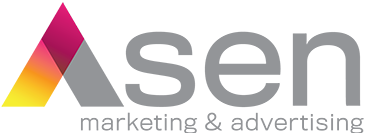You’ve probably heard hundreds of times the importance of using social media.
However, you may be doing so reluctantly, not really seeing the value in being on all the different social media networks. And even if you do see the value in one or two of the social networks, you may be asking yourself, “Which channels do I need to be on?” This hesitation is normal for a company that doesn’t specifically sell to consumers.
That being said, effectively utilizing social media can be just as beneficial in the business-to-business (B2B) world as it is for business-to-consumer (B2C) companies. In this article, we’ll walk you through how to know which platforms to use as well as how to make the time you spend on social media pay off.
Which Social Media Platforms Should I Use?
In an ideal world, you’d be on every platform with a steady stream of new and engaging content for each social media network. However, since we live in a world with limited time and resources, deciding which platforms to dedicate time to is an important decision. For someone in the B2B space, it’s not necessary to be on every platform. But, deciding which platforms to choose will vary based on your company and the nature of your industry.
Regardless of industry, every company should have a presence on Facebook and LinkedIn. Facebook is a more casual platform for individuals to interact with a company, whereas LinkedIn provides a more professional atmosphere. We consider each of these platforms essential because it’s almost guaranteed that the people you’re trying to reach will be on them — Facebook in a more personal manner, while associated with their company on LinkedIn.
For the remaining platforms (Twitter, Instagram, YouTube, etc.), it will ultimately depend on who you’re trying to reach and the content you have available. For example, if people in your industry get information from Twitter, it would be beneficial for your brand to have a presence there. Instagram presents an opportunity for brands to showcase creative elements of their work that benefit from being displayed visually. Meanwhile, YouTube is extremely valuable if you have enough quality video content for users to peruse.
Lastly, regardless of which platforms you choose to use, don’t forget to check in on these pages to see if your followers have commented on photos/videos, posted questions, or left reviews. Responding in a time-sensitive manner is critical to keeping a current client happy or a potential client in the sales funnel.
How To Generate ROI On Social Media Advertising
Even if you have a presence on a social media channel, it’s still difficult to reach people outside of your immediate circle or those associated with the business. That’s where advertising comes in. On Facebook, there are a couple of options for implementing advertising. The simplest option is to “boost” posts that you’ve already created. Rather than only showing posts to people who currently like your page, you can expand the reach to a much larger audience. Audience selection is seemingly unlimited, allowing you to target users based on criteria such as geography, demographics, psychographic data, and interests.
As an alternative to boosting posts, setting up a Facebook Ads Manager account allows for a more targeted, granular audience and campaigns that run indefinitely — rather than for just a set period of time. From your Facebook Ads Manager account, you can also create new ad variants, adjust the audience you’re targeting, redirect budget from campaigns / ads that aren’t performing as well to those that are seeing more meaningful results. While these types of ads are much more powerful for testing, this also requires continuous monitoring so changes can be made to optimize performance.
While LinkedIn has a more limited reach than Facebook, its advertising targeting capabilities are more robust in a business-focused context. For example, you can use LinkedIn advertising to accurately target individuals with a specific job title, individual companies, and even within matching industries. This granularity does come at a cost though, as LinkedIn advertising is typically more expensive than Facebook.
As for advertising on the other social media platforms, Instagram makes that process easy since it is owned by Facebook. Within Facebook Ads Manager, just select Instagram when choosing where ads are placed. Setting up YouTube ads is also relatively easy, especially if you already have a Google Ads account. While Twitter isn’t owned by Google or Facebook, they do make it quite easy to set up advertising on their platform.
Whichever platforms you choose to advertise on, make sure you’re frequently checking in on the ads to optimize performance and calculate your ROI. Even with continuous improvement, the work is never done. Keep testing new ads, audiences, and platforms to see which social media platforms are right for you and your business.
Authored by Dave Bloom, Digital Strategist at Asen. With a decade of industry experience and an MBA from the University of Rochester, Dave specializes in optimizing social media advertising campaigns for B2B brands, leveraging targeted strategies on platforms like Facebook and LinkedIn to drive engagement, conversions, and measurable ROI.
